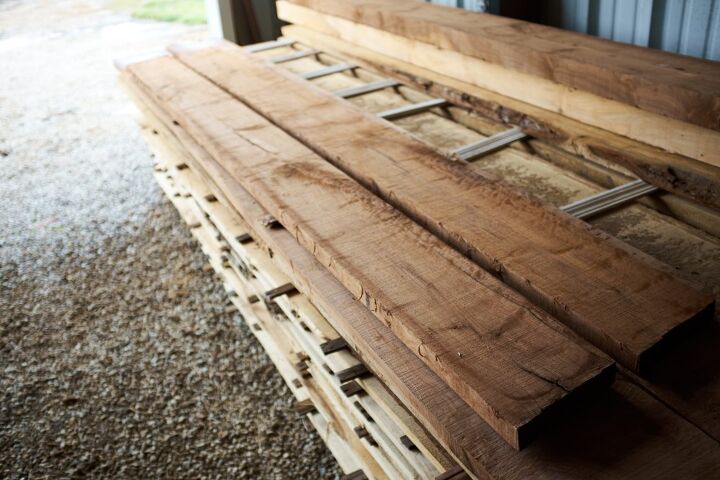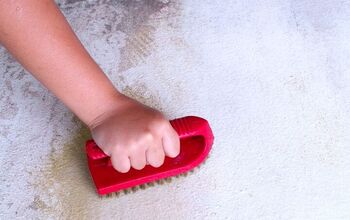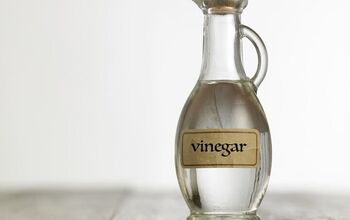How To Remove Mold From Rough Cut Wood? (Do This!)

The very word “mold” conjures images of ugly, bad, and disease-related things that go bump in the night. We are also no strangers to the very real and viable concerns surrounding topics like black mold and mold-related sickness. And that, of course, leads to very important questions like how to remove mold from rough cut wood.
Mold can be removed from rough cut wood using a deep and aggressive cleaning process. Deeper mold issues may require using extensive cleaning and mold removal measures, including sanding. It is also important to remember to wear personal protective equipment when dealing with mold.
There are a few options when it comes to removing mold from rough cut wood. In the majority of cases, a good cleaning using a defined and thorough process will take care of the issue. For more intensive cleaning measures products such as bleach and vinegar may be needed.
Don’t throw out that antique or your favorite wooden coffee stand just yet. Here are the basic steps and what you need to know about how to remove mold from rough cut wood.
Do You Need Mold Removal Services?
Get free, zero-commitment quotes from pro contractors near you.

Basic Steps to Remove Mold from Rough Cut Wood
Remember that mold is dangerous, so before beginning any cleaning or mold removal process, it is vital to take the necessary precautions. Ensure there is plenty of ventilation where the cleaning is being done, and always wear protective equipment.
What you will need:
- Protective clothing (e.g. long sleeves, enclosed shoes, etc.)
- Protective equipment including goggle, glove, and breathing mask
- Soap and water
- Bleach
- vinegar
- sandpaper
- vacuum
While we may not need every item on the list, what will and won’t be required to remove the mold will depend on how badly affected the area is.
Step 1: Vacuum In and Around Affected Area
The first step of removing and cleaning mold from rough cut wood begins with vacuuming in and around the area. Before starting, remember to wear the necessary gear and to ensure proper and safe ventilation.
The vacuuming will help to remove any loose mold particles. Once the vacuuming is completed, be sure to remove and safely dispose of the vacuum bag. Now, it is time to address the affected area directly.
Step 2: Cleaning the Affected Area
Painted or unpainted, cleaning the molded area with warm soap and water is an essential step to removing from rough cut wood. If the affected area isn’t too deep, this process can remove nearly all the mold.
In some cases, painted wood can help to prevent mold from getting to the wood or too deeply ingrained, which may also mean that the soap and water solution could work more efficiently and quickly. It doesn’t mean, however, that the cleaning and mold removal process is done.
Step 3: Deep Clean with Diluted Bleach
Unfortunately, and more often than not, by the time we have detected mold it has already had time to work. That also means that deeper cleaning is advised, even when we can’t noticeably detect any more growth.
Using a diluted bleach solution that consists of 10 parts warm water, 5 parts bleach, and one-part detergent, clean the affected area thoroughly. This process will help to kill anything beneath the surface in addition to helping prevent the return of mold.
Is It Dangerous to Remove Mold from Rough Cut Wood?
Mold isn’t something that should be taken lightly, and it needs to be dealt with cautiously. For most people in typically good health, it is reasonably safe to attempt to clean and remove mold from rough cut wood provided they follow the recommended precautions.
These precautions, as cited earlier, include personal protective gear such as gloves, eyewear, and breathing gear. This also includes taking the necessary working precautions, such as working in a well-ventilated area and taking breaks to step away for air.
Those with health conditions, in particular those related to breathing issues, should consult with their family doctor before attempting to deal with mold. Remember, mold is dangerous, so if you feel uncomfortable or unsafe about cleaning or removing it yourself, seek help and ask questions.
Can Mold Spread to Other Areas of the Home?
Mold breeds in places that are dark and damp, and areas of the home that are prone to maintain or be more humid are more susceptible. Mold also is a threat in the sense of producing airborne concerns.
The good news, however, that unless there is an area that meets the above criteria, mold isn’t going to jump from one room to the next. Yes, mold can spread (and fast), but it is localized and it won’t take over the entire house – although it can render an entire basement as dangerous!
Where Can Mold Grow
It would be nice if there was some type of defined or regular area where we could watch for mold to grow. Unfortunately, there is essentially nowhere mold can’t grow, and nearly nothing it can’t grow on.
The key to staying ahead of mold is recognizing where the potential conditions exist for mold to grow. Damp areas, where water collects or humidity is higher. Dark areas, that are often void of sunlight and commonly have no airflow. These are the most common factors and it is why places like basements, bathrooms, and laundry rooms are so susceptible.
Can I Take Measures to Prevent Mold?
If you have never had mold in your home, there are steps and preventative measures that can be taken to help make sure you never do. If you have had to clean and remove mold from your home and from places like rough cut wood, these measures can also help to prevent the return of mold.
Steps to Help Prevent Mold
Employ these measures to help prevent or to keep mold from returning, and to help keep your home safe and mold-free.
Step 1: Keep an Eye On Humidity
Mold doesn’t like dry conditions, and mold thrives in humid climates. Keeping your home’s humidity level at or below 50 percent will help keep mold at bay. Dehumidifiers and air conditioners are great tools to help maintain lower humidity levels in the home.
Step 2: Feel the Air
Another friend of mold is stagnant and damp conditions. Without airflow, mold is empowered to grow and to affect areas more deeply. Keeping air flowing freely in the home is another good way to fend of the onset or return of mold. Exhaust fans, ceiling fans, and other types of air circulation and movement (box fans) will help to get the job done.
Step 3: Water Preventative and Proactive Measures
Are there any leaks in the plumbing? Even those slow non-pressing leaks that can wait? Well, when it comes to mold, they can’t wait. Staying proactive against any potential moisture sources also mean taking preventative measures against mold.
Always keep an eye out for leaks, signs of moisture, and on areas like plumbing fixtures. Simply put, without moisture mold doesn’t grow.
Step 4: Use Mold Inhibiting Products
Another proactive step that can be taken to prevent mold is the use of mold inhibiting products. This includes mold inhibiting paint products to mold-killing bathroom and cleaning products. (You will notice that the majority of these are also bleach-based).
Related Questions
Mold is not only an unwanted guest but also a danger to our health and safety. Here are a few other commonly asked questions regarding mold.
What Are The Common Risks Associated With Mold?In many situations, mold may cause effects that are mild and may not even be associated with its presence. This includes common symptoms like coughing, eye irritations, sore throat, or runny nose.
Others, often with other medical conditions such as asthma, may have more serious reactions. From an infection in the lungs to severely compromised breathing issues, mold can be a legitimate danger to many people.
What Are The Signs That There Is A Mold Problem?Not all mold is bad mold, as mold has existed for as long as humanity itself. So when do we know there is a potential mold problem or a reason for concern?
The most obvious clue that there is a mold problem is the mold we can see. When those dark spots appear, it no longer becomes a question, but an issue that needs to be dealt with, but we don’t always see the problem first.
When mold begins growing, we may also begin to smell an odor that is musty or stale. And don’t forget, mold can also be different colors, so be on the lookout and always be proactive.
Do You Need Mold Removal Services?
Get free, zero-commitment quotes from pro contractors near you.

The Last Word
Mold isn’t the end of the world, but it does need to be stopped at the first sign, so it doesn’t live in ours. In the worst-case scenarios, professional help can be sought, but in most cases, it can be dealt with ourselves.
Staying proactive and staying ahead of mold can prevent it from ever taking hold, and properly cleaning it and removing it can keep it from coming back. Good mold or bad mold, it is all better when it doesn’t live at home.
Related Articles

We are a team of passionate homeowners, home improvement pros, and DIY enthusiasts who enjoy sharing home improvement, housekeeping, decorating, and more with other homeowners! Whether you're looking for a step-by-step guide on fixing an appliance or the cost of installing a fence, we've here to help.
More by Upgraded Home Team



























